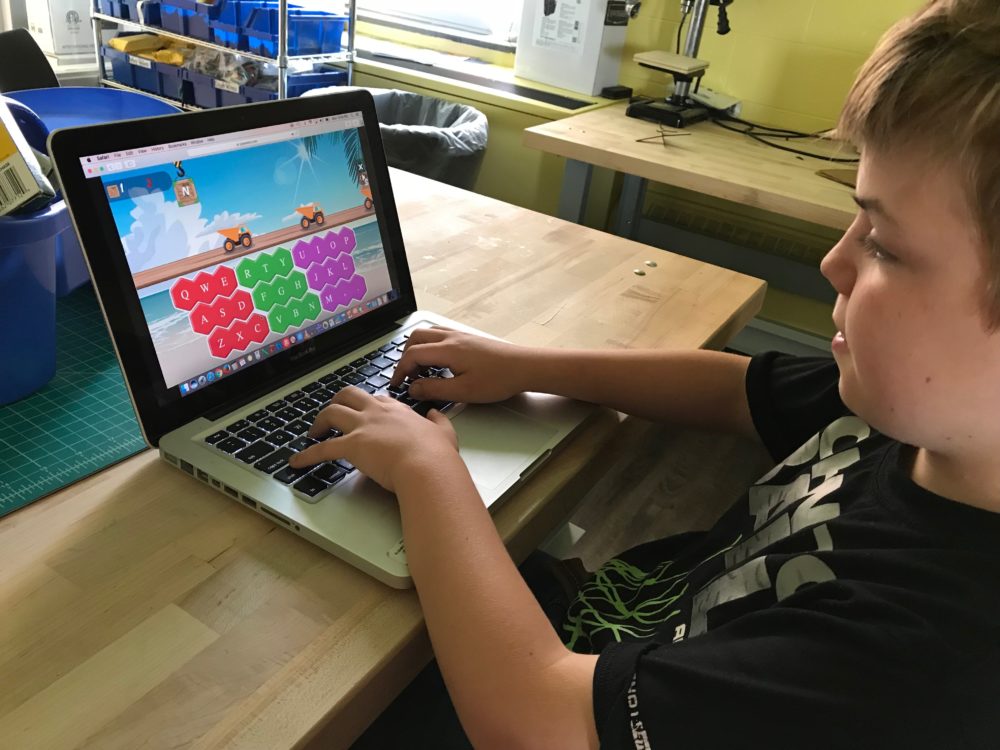By Jan Smith
A tech integrator shares the games that she uses to prepare special education students for life after school.
In the world today, typing is a necessary skill. Most jobs require some degree of computer work, and knowing how to type quickly and efficiently may be an advantage over someone who “finger pecks” at the keyboard. High school graduates need to know how to type, use email, use reference tools on the internet, and handle office programs. And that’s just in today’s market. In 10 years when my elementary students are beginning to enter the workforce, I believe typing will continue to be a preferred method of communication—I just can’t imagine what the device will look like!
As a tech integrator, I teach 320 students in grades K–5. In addition to pushing into each home room for Tech class, I see the special-ed population as a separate and supplemental class of nine. This class includes students with autism as well as those in Life Skills in grades 3–5.
Typing can be a challenge with these students. As a function of their disability, some of my special-ed kids have difficulty remembering where the letters are on the keyboard, even from moment to moment.
An Array of Apps
We are a 1:1 district, each student having an iPad, so all of my special-ed students have school-supplied apps as well as personal games on their devices. It’s important to the classroom teacher and me to use apps that are engaging and challenging and provide some level of choice for students to develop the sense of independence they get from successfully completing an activity. Here are some of our favorites:
- We use the math and reading espark program, which is individualized for each learner and allows him or her to record videos to show what they’ve learned following each quest.
- A game-based platform called Spelling City allows students to practice and learn their spelling words with a minimum of assistance.
- The immersive, adaptive learning site IXL provides practice with repetition of skills.
- The engaging games on Hooda Math are also favorites of the special education teacher’s.
- Epic is one example of a reading app that both special-ed and regular-ed students use in class. It encourages them to follow a story as it is read, and allows all students to be comfortable reading on a level that is comfortable for them without feeling different.
When it came to teaching the keyboard, I used Dance Mat Typing for years and recently started using TypeTastic, which looks and sounds more like the games my students play in other apps. Students find it moderately challenging and are successful.
When I introduced TypeTastic, I was able to differentiate instruction for the range of students in my special-ed class because the app is self-directed and students work at their own pace. Once students completed levels the first three levels, I switched them from tablets to laptops and introduced the idea of the home row. I have had very good success with it, and the kids are trying to maintain proper finger placement.
Student Success Stories
One 5th-grade student, Lila, has particular difficulty with fine motor skills. She is unable to curl her fingers to place them on the “home row” keys. Once she saw the game that shows a graphic of fingers on keys, she placed the straightened fingers of her right hand and began to “pop” the letter balloons on the screen. Although she will never be a fluent typist, her success rate has improved and she is determined to use the left hand in the same way.
Nick is a 4th-grade student with significant memory and retention skills. After playing the first six games multiple times on an iPad, he switched to a laptop. He struggled with finger placement, and even though the activity only used his right hand, he couldn’t remember which key was under each of his four fingers.
Nick became frustrated with his poor results. We worked on using the onscreen finger-placement graphic, and I stood behind him, telling him which finger to use with each balloon that was released. He found that he couldn’t use his ring finger to type and began to assist that finger by tapping it with his left hand. This helped him feel more successful. Eventually I stopped coaching and he continued. He has used the program over several days and the repetition has helped. Without the laptop in front of him, he can now remember the keys he used with his right hand (jkl;), something he never hesitates to prove.
Playing these games on tablets and laptops not only improves my special-ed students’ physical skills; it also gives them a powerful sense of accomplishment when they work through a level of a game the correct way.
Jan Smith is an instructional technology specialist at Elizabeth Forward School District in Pennsylvania. She can be reached at jsmith@efsd.net.

